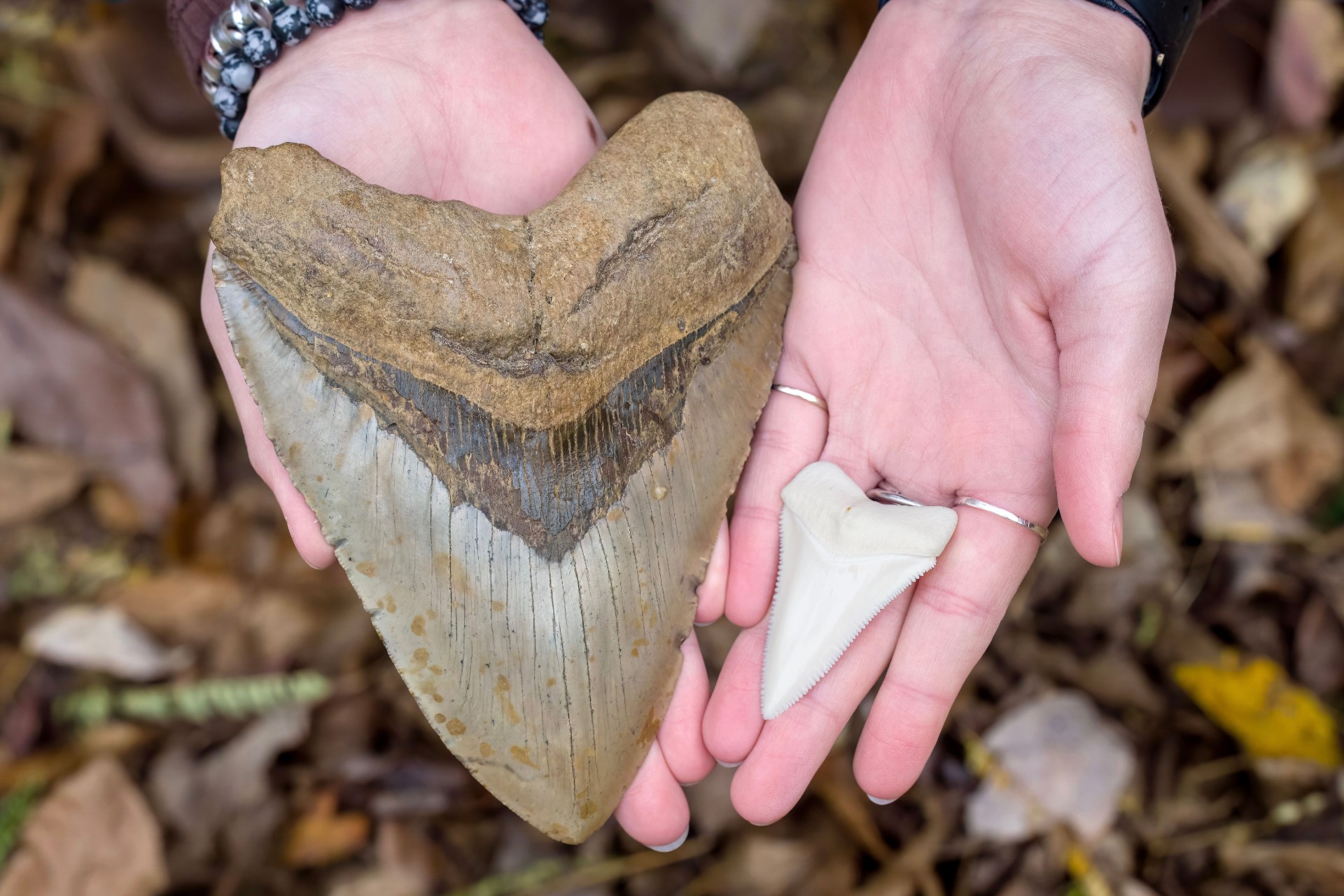Whale skulls with severe bite marks reveal that the sperm whale was a favorite meal for the ocean’s ultimate predator.
Others are reading now
An 18-meter-long, 50-ton behemoth once patrolled even the darkest corners of the world’s oceans millions of years ago.
The megalodon shark is the largest shark to have ever inhabited the planet.
What Megalodon Looked Like
Megalodon is often depicted as an enlarged version of the great white shark. However, new research reveals that the world’s largest shark had its unique features. Researchers from the University of Bristol used the body structure of five modern shark species to calculate the proportions of the Megalodon.
Broad Head Gave Megalodon Powerful Bite
The large teeth indicate that Megalodon had powerful jaws and, therefore, strong jaw muscles. This gave it a compact and broader head than, for example, the great white shark’s.
Also read
Researchers estimate that Megalodon’s head was about 4.65 meters long.
Dorsal Fin Gave Megalodon Stability
Megalodon had a narrow and curved dorsal fin, providing stability during short sprints and long-distance swimming. According to researchers, Megalodon’s dorsal fin was 1.62 meters high, as tall as a human.
Tall Tail Gave Megalodon Thrust
Like other large sharks, the upper part of Megalodon’s tail fin was larger than the lower part. This shape is typical for fish that exclusively use the tail for propulsion.
Megalodon’s tail was about 3.85 meters long.

Although fossilized bones have greatly informed researchers about the prehistoric carnivore, new details continue to emerge. An international team of researchers has examined bite marks on several seven-million-year-old skulls from extinct whales, revealing that the giant shark had a greasy favorite: the sperm whale’s nose.
The World’s Largest Nose is Filled with Oil
The sperm whale is the world’s largest toothed whale, known for its gigantic snout, which can weigh up to 15 tons.
This large nose is comprised of a complex system of connective tissue, air passages, and muscles, and notably contains about 5000 liters of so-called spermaceti oil, which is crucial for the whale’s sound production.
Researchers believe this nutrient-rich and fatty oil was a coveted snack for prehistoric sharks, as evidenced by whale skulls that exhibit bite marks from various shark species, including the great white shark and megalodon.
“Many sharks used sperm whales as a fat depot,” says the study’s lead author, paleontologist Aldo Benites-Palomino from the University of Zurich in Switzerland. “In a single skull, we observed bite marks from between five and six different shark species, all targeting the same area, which is astounding,” as reported by livescience.
These skulls were all collected in southern Peru and date back to the last part of the so-called Miocene era, a period when coastal areas served as a congregation point for a multitude of marine animals.
In total, six of the skulls bore bite marks, and variations in the size and shape of these marks enabled researchers to identify the culprits – including the largest shark that has ever existed.








